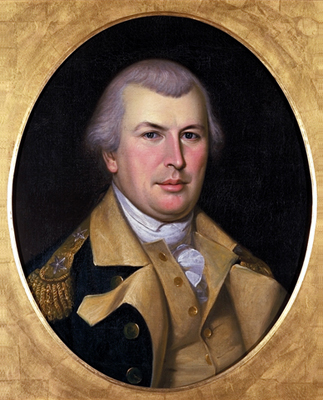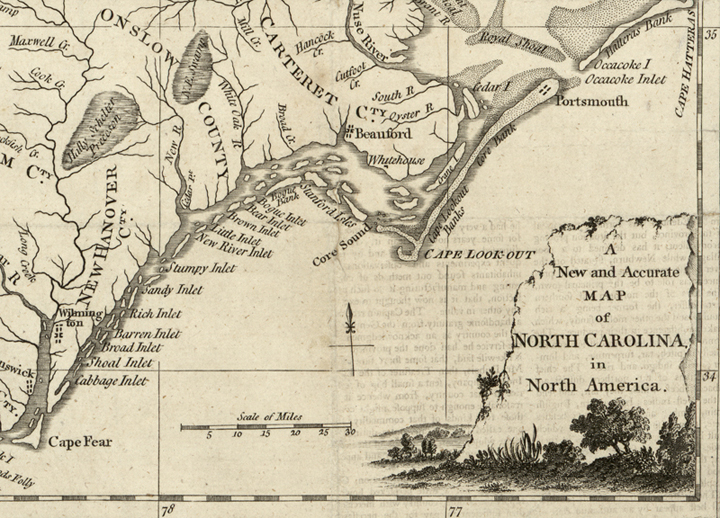
A few weeks ago my doctor was talking to me about the sun, skin cancer and sunstroke. He asked if I wore a hat. I replied that I often wore a baseball type cap. He said, “that’s not a hat.” I immediately thought of General Nathanael Greene’s hat.
Nathanael Greene was a household name in the American Revolution. There are some towns and counties named in honor of Greene, however the man himself is pretty obscure to most of us.
Like most of the patriot commanders, Greene had no formal military training. Before the war he ran his father’s iron foundry in Rhode Island. A Quaker, he was reprimanded in 1773 when he attended a military parade. He learned his military skills before the war from books. Later, he learned on the job by making mistakes and learning from them. In 1774, he helped raise a militia company called the Kentish Guards. He joined as a private.
In 1775, the state of Rhode Island raised three regiments and promoted him from private to Brigadier General to command them. A few months later, at the siege of Boston, he was made a Brigadier General in the Continental Army. He was then 34 years old.
The major tactical disaster of his career was his decision to try to hold Fort Washington on Manhattan island in 1776. After a short battle the fort was forced to surrender its garrison of 3000 men and huge quantities of supplies. In the following months he did well during the retreat of Washington’s army across New Jersey and the Delaware River. He commanded one of the wings of Washington’s army during the spectacularly successful attack on Trenton and a week later during the battle of Princeton. In both battles Greene was conspicuous by his exposure to enemy fire as he led his men from the front. In September and October, Greene again competently led his men in the battles of Brandywine and Germantown.
In 1780 patriot General Horatio Gates was overwhelmed at the battle of Camden by Lord Cornwallis. Not only was his army routed but Gates fled the field. In fact, he covered 180 miles in three days, leaving his infantry to fend for themselves. As Alexander Hamilton wryly commented about Gates’ precipitous flight, “It does admirable credit to the activity of a man at his time of life.” After the disaster at Camden, the war in the South looked lost.
Washington, however, wasn’t going to concede the South to the British. He dispatched General Greene with the urgent assignment of restoring an army in the South and giving battle to Cornwallis.
General Greene, now with an independent command, rushed to North Carolina. He not only rallied the beaten and leaderless remnants of Gates’ army but also recruited new men. He established a supply system. Most importantly he conceived a strategy that would in the end defeat Lord Cornwallis.
The plan was risky. Greene split his forces into widely separated groups. Greene also would retreat when faced with superior forces. This would compel Cornwallis to divide up his larger army to protect a vast area of South Carolina and North Carolina. Greene’s forces would then engage in small battles and through attrition wear Cornwallis down. This also had the advantage of not risking everything in large battles where he might lose his entire army.
While Greene never won a major battle, he did not lose the campaign. Eventually, Cornwallis was drawn into Virginia where he finally was cornered at Yorktown. Greene said, “there are few generals that have run oftener, or more lustily than I have done. But I have taken care not to run too far, and commonly have run as fast forward as backward, to convince the Enemy that we were like a Crab, that could run either way.” He summed up his strategy and the spirit of his men saying, “we fight, get beat, rise, and fight again.”
After the war, the grateful state of Georgia gave a plantation near Savannah, which had belonged to the Loyalist Lieutenant Governor of Georgia, to Greene in recognition of his services. He lived there for only a year. In June of 1786, he was visiting a neighboring plantation and spent the day walking around under the hot sun. Finally, we come to the matter of General Greene’s hat. He wasn’t wearing a hat that day. He became ill on the way home and died the following day of sunstroke. He was 44 years old.










5 Comments
Living in Florida year-round for 30+ years and being fair skinned, I know I have personally built my dermatologist’s vacation home. I now wear a wide-brimmed hat during my walks and slather on the SPF 1,000. Like you, Hugh, I often thought of the injustice of it all. Greene, staying in the Revolutionary War for the whole period, only to then die outside of Savannah of sun stroke after the war at such a young age. Had Greene hydrated and worn a hat, the U.S. possibly could’ve enjoyed a President Greene in later years.
I agree with you entirely, John. Greene was a remarkable man and it is unfortunate that the young country couldn’t have benefited from his talents. Watch out for the sun and heat. Dangerous then and now.
Read the accounts of Gen Greene’s sad and premature death. He lingered for days, with severe headaches, went blind, couldn’t eat or talk, etc. Very few of these are symptoms of “sunstroke and dehydration”, but much more the signals that he had suffered a stroke, a brain hemorrhage, of some sort. Sun stroke is not often fatal, and not with that long list of symptoms. Let the medical men in the audience look at the facts and possibly rewrite this sad chapter in history.
His planation mansion, Mulberry Grove, in Savannah, is no longer capable of being visited, due to a USArmy Engineering Corps widening of the River there for commercial river traffic. Too bad it can’t be moved, as it is full of history, including the place where Eli Whitney, then a tutor for the now fatherless children after Greene’s death, invented the cotton gin. The Industrial Revolution was about to start.
I concur. Having lived in the south my entire life(except when in the military) I know a bunch about sunstroke. Greene’s symptoms are much more aligned with a cerebral hemorrhage. Back then, they probably thought that but today I think our medical professionals would call it a “stroke”.
The more I started to think about it, the more I began to wonder how much his severe asthma played a role in his untimely death.